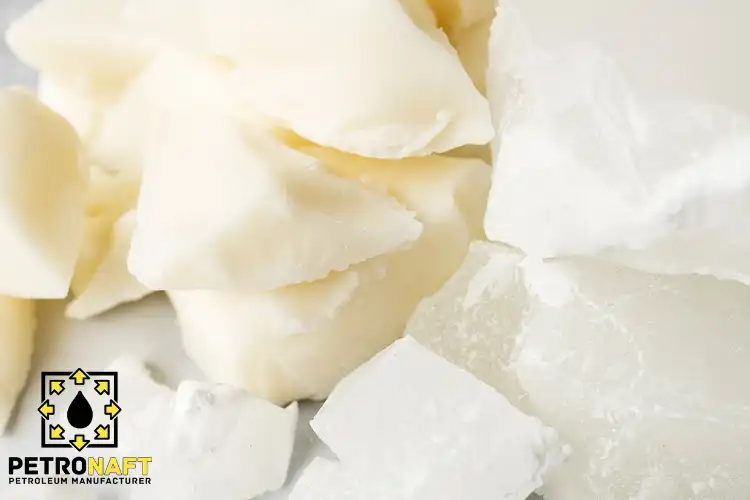Content Overview
Demystifying Paraffin Wax: Semi Refined vs Fully Refined Paraffin Wax Explored
When it comes to paraffin wax varieties, the comparison between semi refined and fully refined paraffin wax is an important subject to explore. Each of these waxes has distinctive characteristics and provides numerous applications in different sectors. This comprehensive guide will cover the essential distinctions between semi refined and fully refined paraffin wax, their production methods, and the pros and cons associated with each.
The Basics of Paraffin Wax
Paraffin wax is a petroleum byproduct created through the refining process of crude oil. It comprises a mix of hydrocarbon molecules, usually containing 20 to 40 carbon atoms. Paraffin wax is widely used due to its versatility, low cost, and availability. It has various applications, including candle making, cosmetics, food preservation, and as a lubricant in industrial settings.
Semi Refined Paraffin Wax: Characteristics and Applications
Semi refined paraffin wax, also known as semi-refined petroleum wax or semi-crystalline wax, is obtained through a partial refining process. This type of wax contains a higher percentage of oil content, typically ranging between 1% and 10%. Due to its higher oil content, semi refined paraffin wax has a lower melting point and a softer texture compared to its fully refined counterpart.
The semi refined variant is commonly used in industries such as:
- Candle making (especially in lower-cost candles)
- Rubber and tire production
- Waterproofing and sealing materials
- Coatings for paper and packaging
Fully Refined Paraffin Wax: Features and Uses
Fully refined paraffin wax, also known as refined petroleum wax or fully-crystalline wax, undergoes a more extensive refining process, resulting in a wax with an oil content of less than 0.5%. This type of wax has a higher melting point and is harder and more brittle compared to semi refined paraffin wax.
Fully refined paraffin wax is utilized in a variety of applications, such as:
- High-quality candle production
- Cosmetics and personal care products
- Food-grade wax for coating and preservation
- Pharmaceuticals
Manufacturing Processes: Semi Refined vs Fully Refined Paraffin Wax
The primary difference between semi refined and fully refined paraffin wax lies in their manufacturing processes. Semi refined paraffin wax is produced through a less rigorous refining process, involving solvent extraction, dewaxing, and deoiling. The resulting wax contains a higher oil content, which contributes to its unique properties.
Fully refined paraffin wax, on the other hand, undergoes additional refining steps, such as hydro-treating and clay filtration. These processes further remove impurities and reduce the oil content, resulting in a purer, more refined product.
Pros and Cons of Semi Refined and Fully Refined Paraffin Wax
Each type of paraffin wax has its own set of advantages and disadvantages that make them suitable for specific applications and industries.
Advantages of Semi Refined Paraffin Wax:
- Lower cost: Due to the less extensive refining process, semi refined paraffin wax is more affordable than fully refined wax.
- Softer texture: The higher oil content gives semi refined paraffin wax a softer and more malleable texture, making it suitable for certain applications like waterproofing and sealing.
- Easier to work with: The lower melting point of semi refined wax makes it easier to handle and manipulate in various industrial settings.
Disadvantages of Semi Refined Paraffin Wax:
- Lower quality: The higher oil content and impurities may result in a lower-quality product compared to fully refined wax.
- Limited applications: Semi refined wax may not be suitable for applications requiring higher purity levels, such as cosmetics and pharmaceuticals.
Advantages of Fully Refined Paraffin Wax:
- Higher purity: The extensive refining process results in a purer product with less impurities and a lower oil content.
- Greater versatility: Fully refined wax can be used in a broader range of applications due to its higher purity levels and more consistent properties.
- Improved stability: The higher melting point and harder texture of fully refined paraffin wax contribute to better stability and performance in various applications.
Disadvantages of Fully Refined Paraffin Wax:
- Higher cost: The additional refining steps involved in producing fully refined wax make it more expensive than semi refined wax.
- Harder to manipulate: The higher melting point and harder texture can make fully refined wax more difficult to work with in some industrial settings.
Selecting the Right Paraffin Wax for Your Needs
When choosing between semi refined and fully refined paraffin wax, it is essential to consider the specific requirements of your application and industry. Factors such as cost, purity, performance, and ease of use should be taken into account.
For applications that require a lower-cost wax with a softer texture and easier manipulation, semi refined paraffin wax may be the ideal choice. However, for applications that demand a higher level of purity, stability, and versatility, fully refined paraffin wax is the preferred option.
In conclusion, understanding the key differences between semi refined and fully refined paraffin wax is crucial for selecting the most suitable product for your needs. By considering the unique properties, manufacturing processes, and pros and cons of each type of wax, you can make an informed decision that best meets the requirements of your specific application and industry.
Purchasing These Products from Petro Naft
For more detailed information and to purchase these products discussed in this article, please visit the dedicated products pages below. Alternatively, use the various communication channels provided on our site to register your purchase inquiry or take advantage of our expert guidance.
Prepared by the PetroNaft Co. research team.

